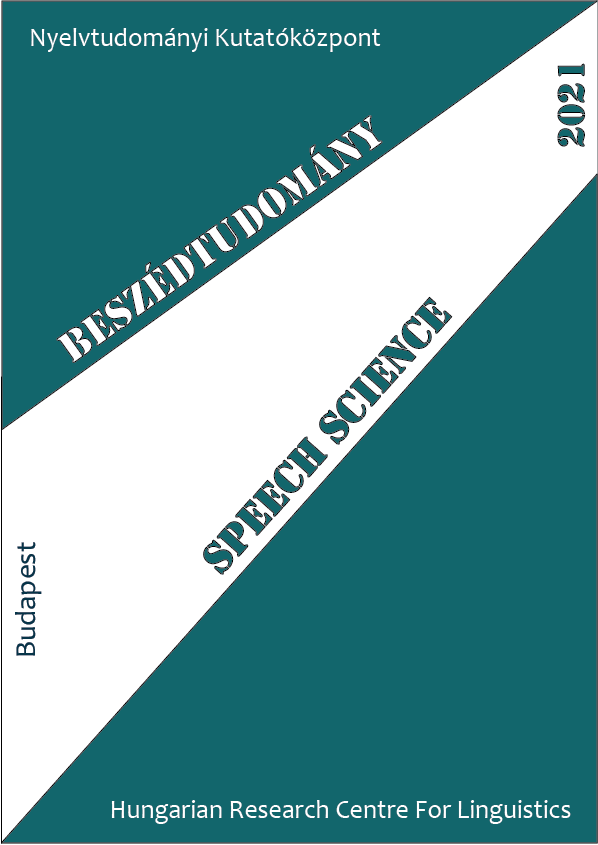Spiránsok mássalhangzó-kapcsolatokban és intervokális helyzetben
Absztrakt
Sibilants are known of both high coarticulatory agressiveness and resistance, i.e. their acoustic features are hypothesized to undergo relatively small changes regardless of the phonetic context, and to trigger acoustic changes in the neighbouring consonants when appearing in clusters. Though most studies analyse /t/ in /stɹ/ clusters and explain changes in both /s/ and /t/ by the effect or /r/. /s/ was found to lower CoG in /st/ clusters and therefore get closer to /ʃ/ occurrences. The present study raised the questions how the coarticulatory aggressiveness and resistence of the voiceless sibilants can be described in clusters with /t/.
3 intervocalic /s/, 3 intervocalic /ʃ/, 3 V/st/ and 3 V/ʃt/ clusters were analysed in the sentence reading of 72 speakers. The manner of articulation of the /t/ segment, the duration, centre of gravity (CoG), standard deviation (sd), skewness and kurtosis of the spectral features of the sibilants were analysed.
The results showed that /t/ underwent large variability in both clusters, but there was no difference in the ratios of the effect on the manner of articulation of the surfacing /t/. Difference was found between genders and /t/ positions. The duration and the first three spectral moments (CoG, sd and skewness) of the sibilants did show the effect of the phonetic context, i.e. appearing between vowels or in sibilant + /t/ cluster. This effect was, however, different between the two consonants and the genders.
Our main findings show the followings. The surfacing speech sound of /t/ cannot appear only due to the presence and effect of /ɹ/ in /stɹ/ sequences, but the closure phase might be reduced in effort. The coarticulatory effects played on the sibillants raise the question of gender differences that might partially appear due to physiological differences, but sociolinguist factors must be considered, as well.




